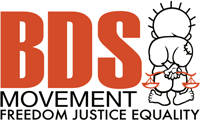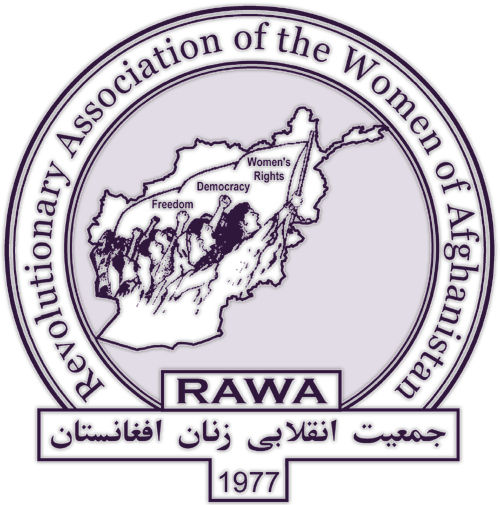WW4 Report
Fears for Fallujah 'disappeared'
Shi'ite militiamen who fought alongside the Iraqi army in the battle for Fallujah are believed to have seized some 900 civilian men and boys and killed nearly 50. UN human rights chief Zeid Ra'ad al-Hussein said the civilians were detained June 1 during the battle to oust ISIS from the Sunni-majority city. They were among some 8,000 who fled the outlying village of Saqlawiyah as troops moved in on the city. Fighters from Kataaib Hezbollah, one of several Shi'ite militias involved in the siege, reportedly tortured many detainees. Al-Hussein also warned Iraq could see a return to full scale sectarian violence after the July 3 Baghdad attack. (BBC News, The Independent, July 5)
Syria: jihadist factions accused in war crimes
Armed groups in Aleppo, Idlib and surrounding areas in Syria's north have carried out a "chilling wave" of abductions, torture and summary killings, Amnesty International charges in a new briefing. The briefing, "Torture was my punishment," charges that some of the named rebel groups are believed to have the support of governments such as Qatar, Saudi Arabia, Turkey and the US "despite evidence that they are committing violations of international humanitarian law (the laws of war)." Groups including Nusra Front, al-Shamia Front and Ahrar al-Sham have established their own shari'a "justice systems" in areas they control, with their own "unofficial" prosecution offices, police forces and detention centers, imposing punishments amounting to torture for perceived infractions. (AI, July 5)
Controversy over FARC 'concentration zones'
Under the plan now being formalized for demobilization of Colombia's FARC guerillas, special zones are to be established for fighters to "concentrate" and then be integrated into civilian life. There are respectively being called Encampments and Veredal Zones of Transition and Normalization—a reference to veredas, as unincorporated hamlets are known in Colombia. There are to be eight Encampments: at Fonseca, Guajira department; Vigía del Fuerte, Antioquia; Riosucio, Chocó; Tierra Alta, Córdoba; Corinto, Cauca; San Vicente, Caquetá; Losada and Macarena, Meta; and Puerto Colombia, Guainia. There are to be 23 Veredal Zones in 12 departments: Cesar, Norte de Santander, Antioquia, Tolima, Cauca, Nariño, Putumayo, Caquetá, Arauca, Meta, Vichada, and Guaviare. The Defense Ministry says it will guarantee the security of nearby localities. But the plan is still meeting with some opposition from regional leaders. the governor of Tolima, Óscar Barreto Quiroga, states that he will oppose the location of any concentration zones in his department. (Colombiano, Kronista.co, June 25; El Colombiano, El Tiempo, El Tiempo, El Tiempo, El Pais, El Heraldo, June 24)
White House releases (contested) drone kill count
The White House said July 1 that between 64 and 116 civilians have been killed by drone and other US strikes in Pakistan, Yemen, Somalia and Libya since Barack Obama took office in 2009. But this first public assessment by the administration put the civilian death toll significantly lower than estimates by various human rights groups, which range as high as 1,000 killed. Obama also signed an executive order outlining US policies to limit civilian casualties, and ostensibly making protection of civilians a central element in US military operations planning. The order requires an annual release of casualty estimates, and says the government should include "credible reporting" by non-government groups when it reviews strikes to determine if civilians were killed.
Entire population of Fallujah displaced
Iraqi and coalition air-strikes are carrying out air-strikes on convoys of ISIS vehicles fleeing Fallujah, as the city has finally fallen after a five-week siege. Hundreds of vehicles have reportedly been destroyed. (Rudaw, June 30) Hundreds of Iraqi soldiers were killed and more than 3,000 wounded in the battle Fallujah, which was taken by ISIS almost exactly two years ago. (MEE, July 1) Iraqi forces are said to be "screening" some 20,000 people—mostly young men and boys—detained while trying to flee the city. (MEE, June 25) Aid workers say the displacement of almost the entire city—between 60,000 and over 80,000 people depending on who is counting—has been disorganised, at best. "The entire humanitarian community has failed Iraq—from donors, to governments, to the implementing agencies on the ground," Karl Schembri of the Norwegian Refugee Council told IRIN news service. "Fallujah has exposed all of our shortcomings with massive consequences for the tens of thousands of civilians displaced." He added: "When Mosul happens, God help us." (IRIN, June 28)
Amnesty: migrants face 'horrifying' abuses in Libya
Amnesty International is demanding the international community take action to address "horrifying" abuses of refugees and migrants in Libya. The June 30 statement warns that EU cooperation on immigration with the UN-recognized Government of National Accord (actually one of three rival governments in Libya) should not go ahead until guarantees for human rights are provided. Testimony gathered from some 90 migrants and refugees who made it to the safety of three camps in the Sicily and Puglia regions of Italy describes how Black Africans are imprisoned and exploited until they could earn their payment to traffickers or have more money sent by relatives back home. "From being abducted, incarcerated underground for months and sexually abused by members of armed groups, to being beaten, exploited or shot at by people smugglers, traffickers or criminal gangs—refugees and migrants have described in harrowing detail the horrors they were forced to endure in Libya," said Magdalena Mughrabi, Amnesty's interim deputy director for the Middle East and North Africa.
Bolivia: police clash with striking workers
At least nine were injured, including four police, and some 30 detained when security forces clashed with unionists of the Bolivian Workers Central (COB) blocking a highway through Cochabamba department June 30. The action was part of a 72-hour strike called to oppose the government closing of the state textile firm Enatex. National Police troops used tear-gas to break up the roadblock, and protesters responded with rocks and clubs. The COB has repeatedly called general strikes in recent weeks to demand the government annul the decree liquidating the firm and dismissing 850 workers. The COB supported President Evo Morales when he too office in 2006, but now accuses him a "neoliberal" economic policy. Morales has declared the strike "illegal," saying that only 180 of the dismissed workers are refusing to accept severance pay, and "for this number, they cannot paralyze the country." (InfoBae, Bolivia Prensa, June 30)
Canada: court blocks Northern Gateway pipeline
Canada's Federal Court of Appeal overturned approval of Enbridge energy company's controversial Northern Gateway pipeline that would link Alberta's oil sands to British Columbia's north coast. In the 2-1 ruling June 30, the three-judge panel found that Ottawa failed to properly consult the First Nations affected by the project. That the federal government's consultation efforts "fell well short of the mark," the ruling stated. "We find that Canada offered only a brief, hurried and inadequate opportunity...to exchange and discuss information and to dialogue." President of British Columbia's Haida Nation, Peter Lantin, said: "It's a great day for Haida Gwaii and the coast of BC. We're all celebrating a victory for the oceans and our way of life."















Recent Updates
16 hours 48 min ago
17 hours 28 min ago
17 hours 37 min ago
1 day 20 hours ago
2 days 1 hour ago
2 days 16 hours ago
2 days 16 hours ago
2 days 23 hours ago
3 days 1 hour ago
3 days 17 hours ago